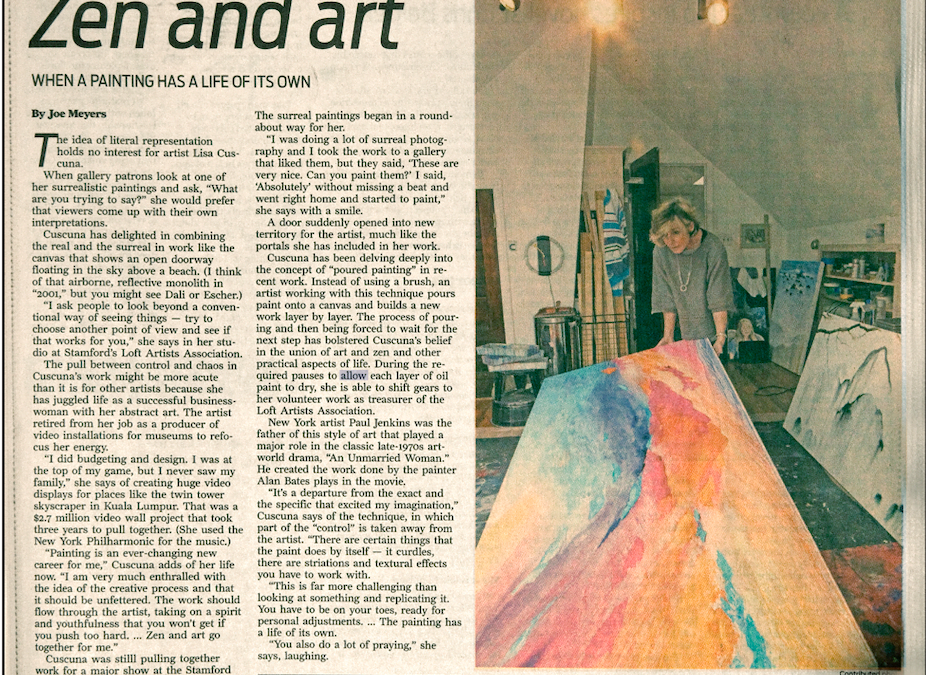By Joe Meyers
The idea of literal representation holds no interest for artist Lisa Cuscuna. When gallery patrons look at one of her surrealistic paintings and ask, “What are you trying to say?” she would prefer that viewers come up with their own interpretations. Cuscuna delights in combining the real and the surreal in works like a canvas depicting an open doorway floating in the sky above a beach. She challenges people to look beyond conventional perspectives and see if a different point of view resonates with them. “Painting is an ever-changing new career for me,” Cuscuna adds, describing her enthusiasm for the creative process and the flow of art unencumbered by rigid constraints. She was still preparing for a major show at the Stamford nonprofit, “The Fluid Palette,” opening March 17 when I visited her studio.
The surreal paintings began in a roundabout way for Cuscuna. “I was doing a lot of surreal photography and I took the work to a gallery that liked them, but they said, ‘These are very nice. Can you paint them?’ I said, ‘Absolutely,’ without missing a beat and went right home and started to paint,” she says with a smile. A door suddenly opened into new territory for the artist, much like the portals she includes in her work. Cuscuna has recently delved into the concept of “poured painting” in her work. Instead of using a brush, she pours paint onto a canvas and builds up layers to create a new piece. The process of pouring and waiting for each layer to dry has reinforced Cuscuna’s belief in the unity of art and Zen, and other practical aspects of life. During the required pauses for the paint to dry, she shifts gears to her volunteer work as treasurer of the Loft Artists Association. This technique, inspired by New York artist Paul Jenkins, known for his role in the movie “An Unmarried Woman,” departs from exactness and specificity, and excites Cuscuna’s imagination. “There are certain things that the paint does by itself – it curdles, you have to work with it. This is far more challenging than looking at something and replicating it. You have to be on your toes, ready for personal adjustments… The painting has a life of its own. You also do a lot of improvising,” she says, laughing.
